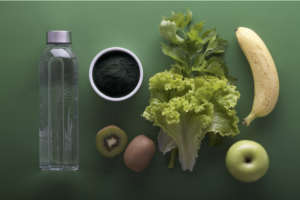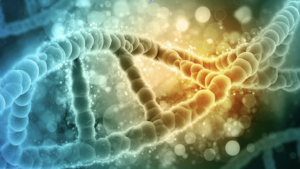We have all heard about the negative effects of high cholesterol. We are told to avoid foods that are high in cholesterol and that one needs to exercise regularly. However, not all cholesterol is “bad” cholesterol. Cholesterol (“good” cholesterol) is vital for your health and well-being. Nonetheless, high cholesterol is a worldwide health problem. If left untreated, high cholesterol levels may increase the risk of heart attacks, strokes and, diabetes.[1] So why does the body contain “bad” cholesterol? Is it something that can be prevented? Current research has found a link between the controlling of “bad” cholesterol and heart diseases.
What is cholesterol?
Cholesterol is a waxy, fat-like substance found in cells all over the body.[2] It is crucial for building cell membranes and producing vitamins and hormones like testosterone and estrogen.[3] Cholesterol is mainly produced by the liver. In addition, cholesterol comes from the food we eat-poultry, dairy, etc.[4] When there is too much cholesterol, it causes a build-up in your arteries. With time, the buildup (plaque) narrows the arteries.[5] Narrowed arteries decrease the flow of blood to the heart.[6] If blood supply is completely cut off to parts of the heart, this results in a heart attack.[7]
Low-density lipoprotein (LDL) [8] and high-density lipoprotein (HDL)[9] are two types of cholesterol.[10] LDL carries cholesterol from the liver to the rest of the body. HDL carries cholesterol from different parts of your body to the liver. The liver then removes the unwanted cholesterol from your body. If there are high levels of LDL and low levels of HDL, a buildup of cholesterol in your arteries may occur.[11] This increases your risk of heart attacks and strokes. So what could cause the buildup of LDL and what could the consequences thereof be? Many factors increase LDL cholesterol in the body.
There are factors outside one’s control that contribute to high cholesterol. Your genes play a role in how much LDL cholesterol your body produces and how quickly it removes it from your body. High cholesterol can run in the family. Age and sex are a factor in a person’s cholesterol level. Cholesterol starts rising from the age of 20 up until age 65. There are also sex differences. Men below the age of 50 have higher cholesterol than women of the same age. The opposite happens when women and men reach 50. This is because, with menopause, LDL cholesterol often increases[12] for women. There are factors that a person can change to lower their LDL cholesterol. Being overweight can increase your level of LDL cholesterol. Losing weight can thus lower your LDL cholesterol and increase your HDL cholesterol. A diet that is high in saturated fats, trans fats, and cholesterol can also increase your blood cholesterol. To lower LDL cholesterol, saturated fats, trans fats, and cholesterol should be reduced from the diet.[13] Lastly, the lack of physical activity can increase your chances of being overweight. As such, exercising can decrease your LDL cholesterol while increasing your HDL cholesterol.[14]
LDL and possible inhibitors
A recent study was done at the University of Alberta. The results found a protein that possibly interferes with LDL receptors. LDL receptors are responsible for cleaning the blood of “bad” cholesterol.[15] What LDL receptors (LDLR) do is move LDL cholesterol into cells. The cholesterol is then broken down and removed from the body. If these receptors are inactive or disrupted, they are unable to remove LDL cholesterol from the body.[16] This then increases the amount of LDL cholesterol in the blood. The study found a protein called membrane 1- matrix metalloproteinase (MT1-MMP) is involved in the breakdown of LDL receptors.[17] This protein is found in several tissues and cell types and is critical in cell migration. However, this protein sometimes prevents cell migration which leads to disease progression. As such, if cell migration is inhibited by MT1-MMP, LDL cholesterol starts accumulating. As it currently stands, the researchers are working to find what part of this protein causes LDL receptors not to work. Additionally, this study found that the protein is also important for tumor invasion in cancer. These results can offer treatment for two of the most common diseases.
Improving the prognosis of high LDL cholesterol
The World Health Organization (WHO) reported that 133 million people in the five largest EU countries[18] have high levels of cholesterol. There are estimated to be about 17 million deaths each year due to cardiovascular disease.[19] This illustrates how high cholesterol is a worldwide problem that needs immediate medical intervention. The findings obtained demonstrated that MT1-MMP could be used for treatment in patients who have high blood cholesterol. The researchers want to continue studying this protein to help develop medication that can target MT1-MMP and disable it. In preventing MT1-MMP, LDL receptors can then successfully remove LDL cholesterol from the body. The researchers are also trying a new technique for their potential drug. They are hoping to create a drug that will only work in the liver, as this would further reduce side effects. In addition, this research could help further cancer research as they aim to work with cancer research specialists. With any luck, the study can be the foundation of the development of future medication for cancer and heart conditions.
References
Alabi, A., Xia, X., Gu, H., Faqi Wang, F., Shi-Jun Deng, S., Nana Yang, N., Ayinuer Adijiang, A., Donna N. Douglas, D. N., Kneteman, N. M., Xue, Y., Chen, L., Qin, S., Wang, G., & Zhang, D. (2021). Membrane type 1 matrix metalloproteinase promotes LDL receptor shedding and accelerates the development of atherosclerosis. Nature Communications, (12). https://www.nature.com/articles/s41467-021-22167-3#citeas
American Heart Association. (2020). What is cholesterol? American Heart Association. https://www.heart.org/en/health-topics/cholesterol/about-cholesterol
Delseith-Hermsdorg, I. (2020). Cholesterol day 2020. Diagnostic Systems. https://www.diasys diagnostics.com/blog/cholesterol-day 2020/#:~:text=According%20to%20the%20World%20Health,to%20CVD%20occur%20each%20year.
Harvard Health Publishing. (2019). How it’s made: Cholesterol production in your body. Harvard Health Publishing. https://www.health.harvard.edu/heart-health/how-its-made-cholesterol-production-in-your-body
MedlinePlus. (2017). HDL: The “good” cholesterol. MedlinePlus. https://medlineplus.gov/hdlthegoodcholesterol.html#:~:text=HDL%20stands%20for%20high-density,stands%20for%20low-density%20lipoproteins
National Institutes of Health. (2005 ). High blood cholesterol: What you need to know. National Institutes of Health. https://www.nhlbi.nih.gov/files/docs/public/heart/wyntk.pdf
National Institutes of Health. (2005). Your guide to lowering your cholesterol with TLC. National Institutes of Health. https://www.nhlbi.nih.gov/files/docs/public/heart/chol_tlc.pdf
University of Alberta Faculty of Medicine & Dentistry. (2021). Protein that blocks body’s ability to clear bad cholesterol identified: Researchers are now looking to develop a drug that will boost existing statin drugs to prevent heart disease. Science Daily. https://www.sciencedaily.com/releases/2021/04/210401123917.htm
Wang, A. (2021). Protein linked to the buildup of cholesterol in the blood. Morning Sign Out. http://morningsignout.com/protein-linked-to-the-buildup-of-cholesterol-in-the-blood/
World Health Organization. (2021). Global Health Observatory (GHO) data. World Health Organization. https://www.who.int/gho/ncd/risk_factors/cholesterol_mean_text/en/#





No comment yet, add your voice below!